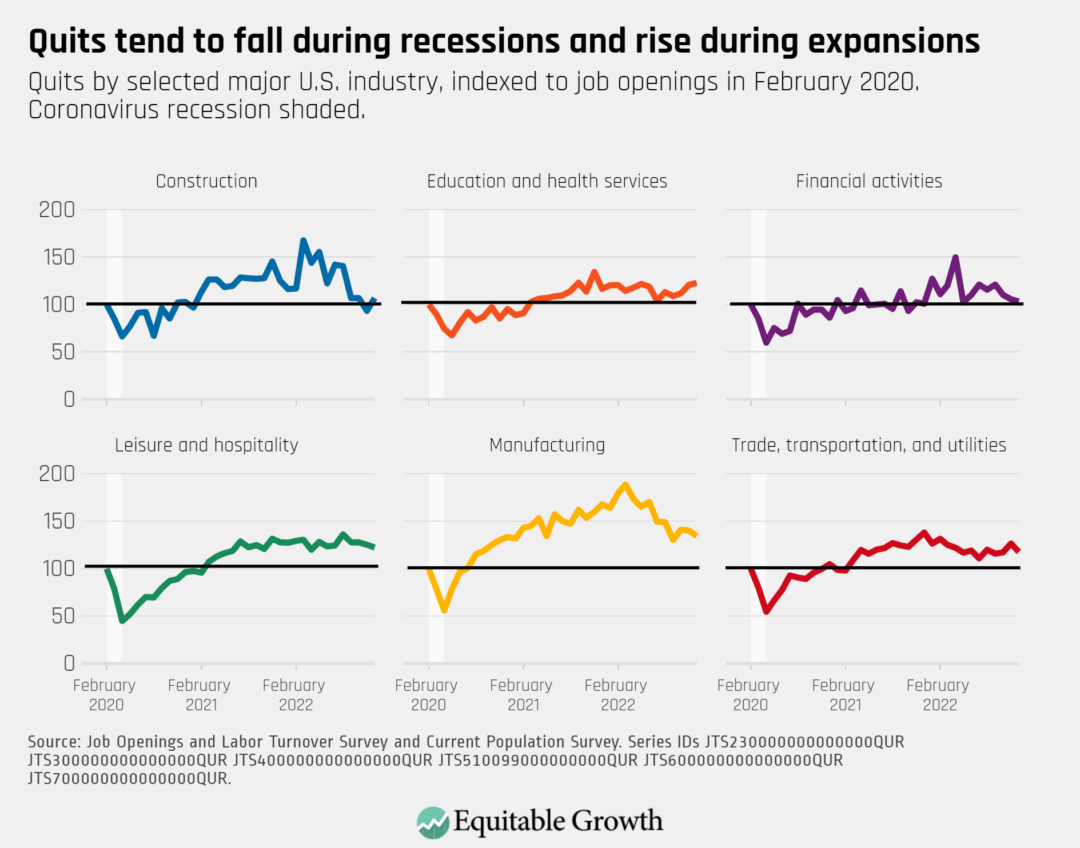JOLTS Day Graphs: December 2022 Edition
The quits rate remained steady at 2.7 percent as 4.1 million workers quit their jobs in December 2022.
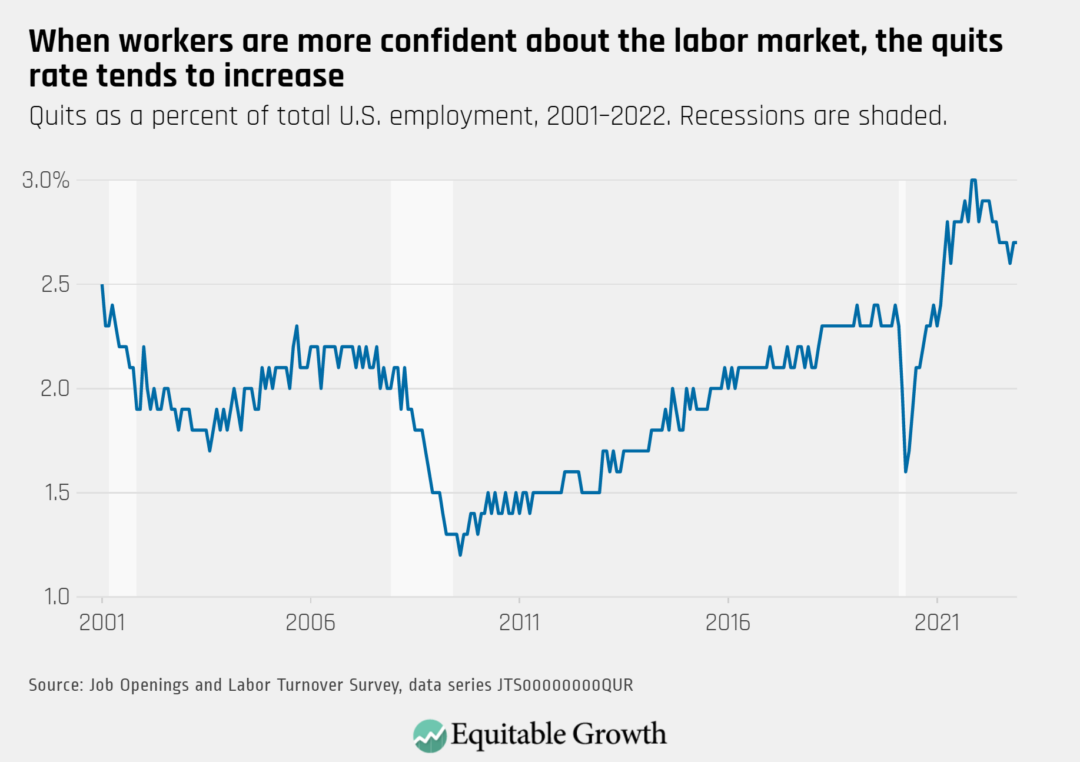
The vacancy yield decreased to 0.56 in December as job openings rose to 11.0 million and hires remained at 6.2 million.
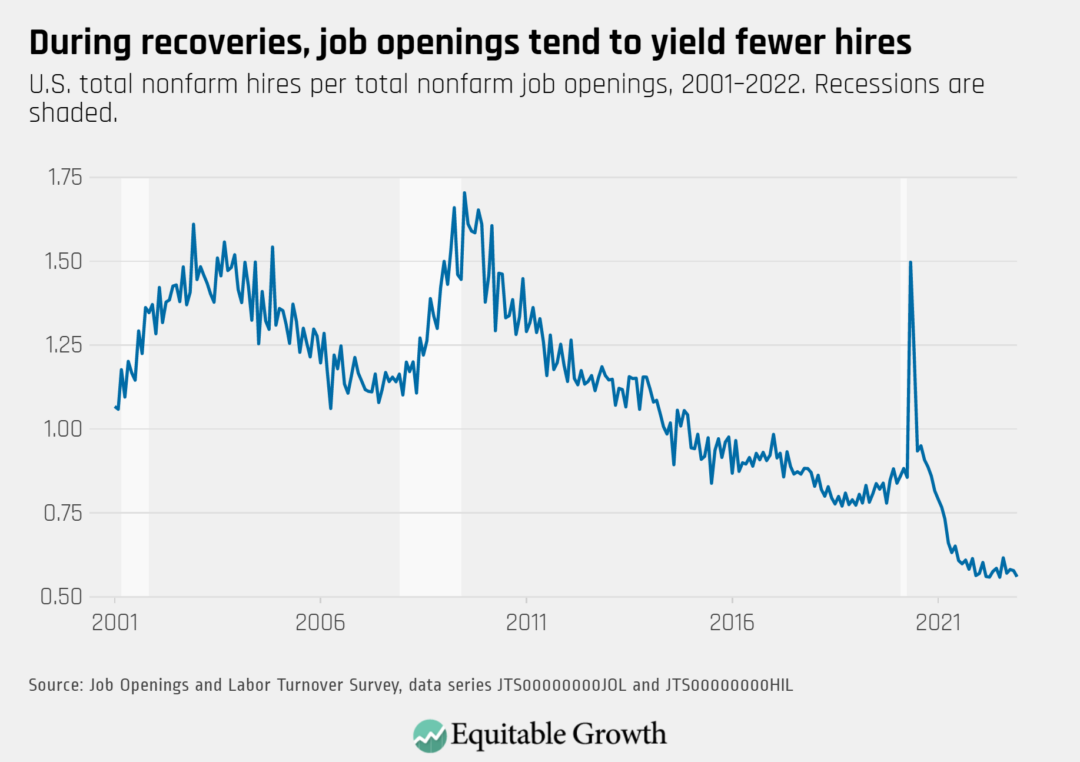
The ratio of unemployed workers to job openings declined to 0.52 in December 2022 from 0.57 in November.
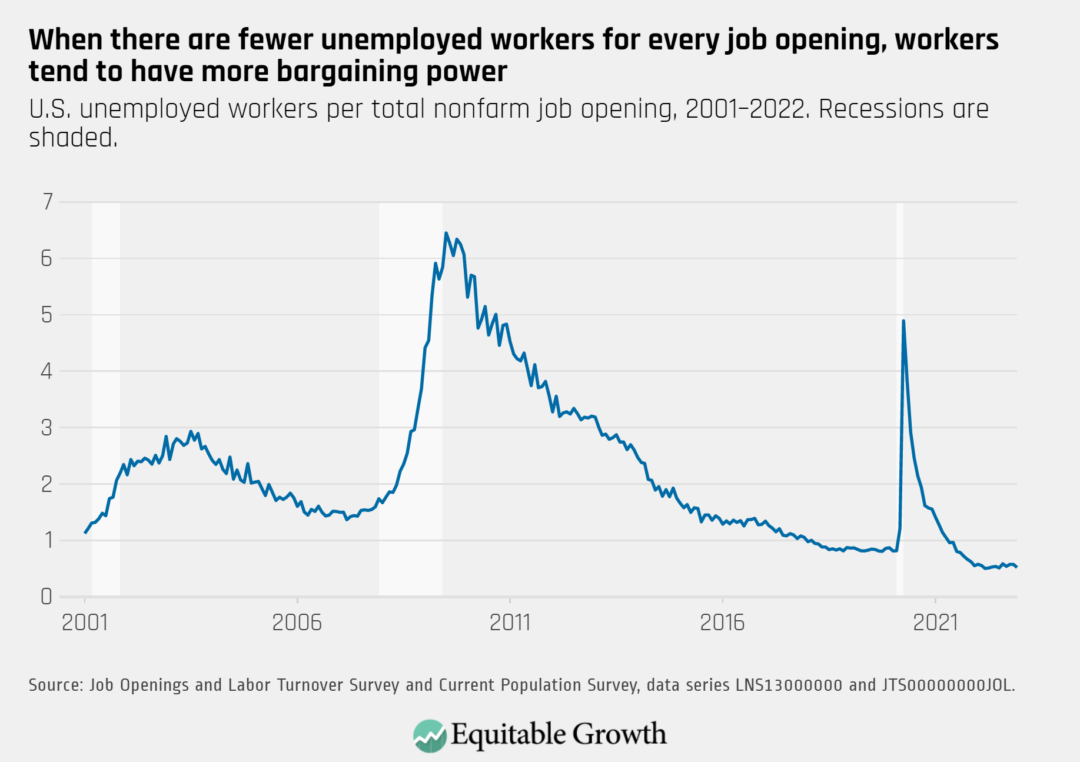
The Beveridge Curve continues to be in an elevated range compared to previous business cycles, as the unemployment rate declined to 3.5 percent and the rate of job openings rose to 6.7 percent.
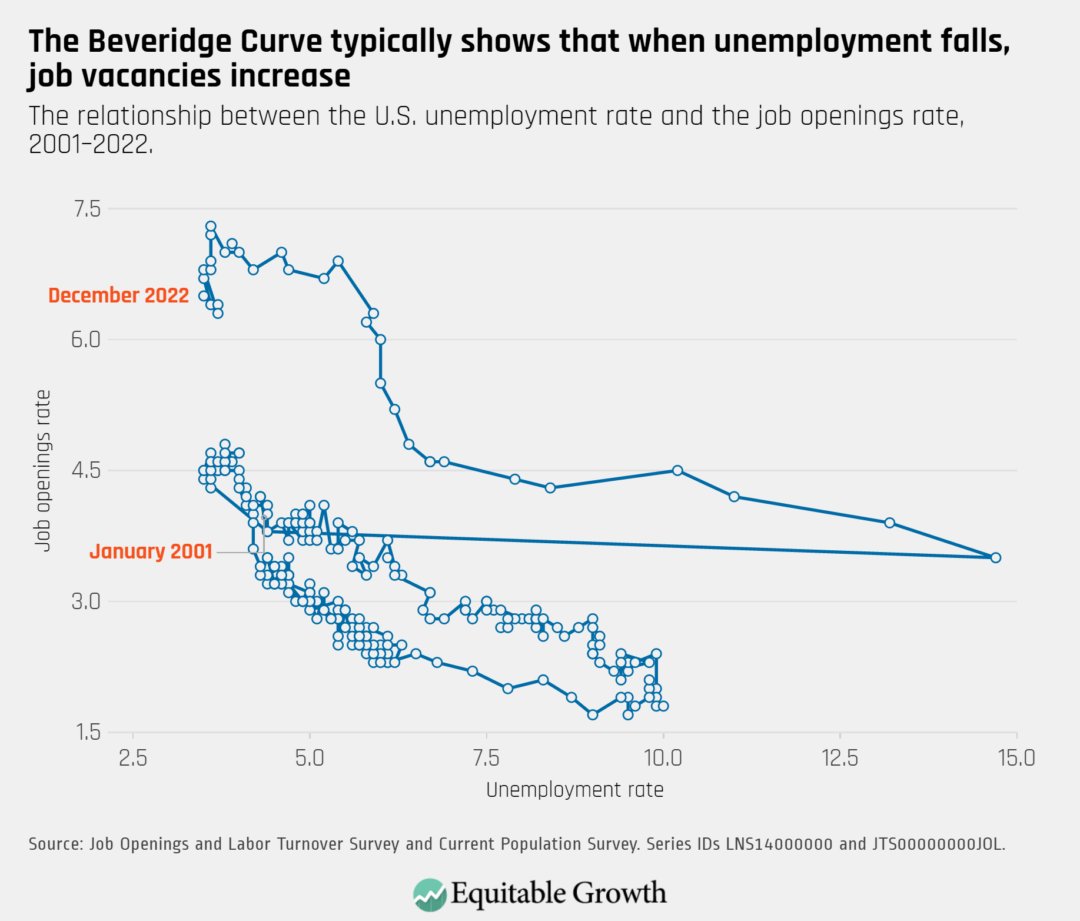
The total number of quits remained steady in December. Quits rose in some industries, such as construction and education and health services, and fell in others, such as leisure and hospitality, and manufacturing, and trade, transportation, and utilities.
